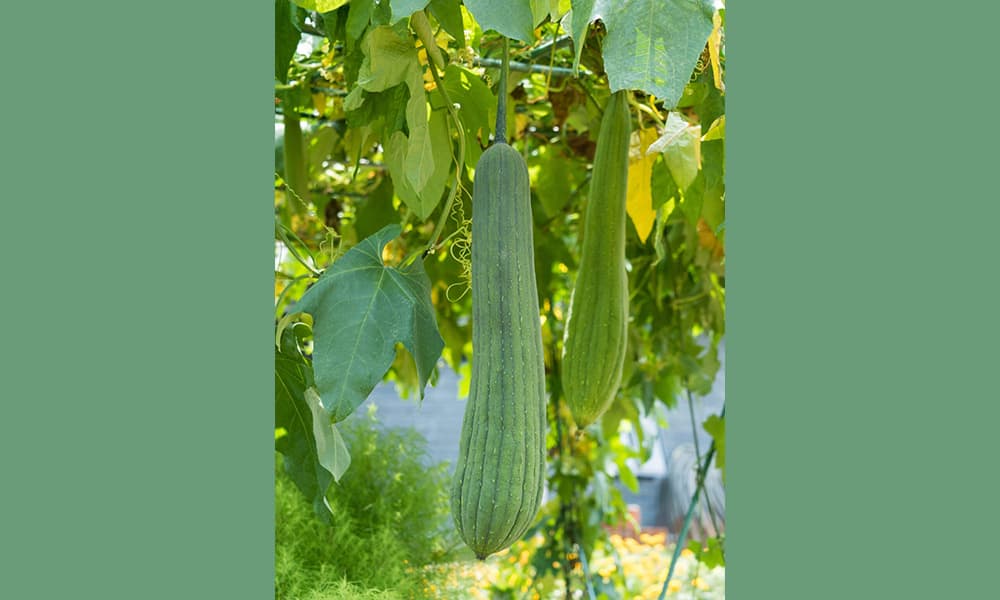Biking through my barrio the other day, I spotted something new: Doña Lourdes had a new plant decorating her front fence. Closer inspection revealed that the bright yellow flowers grew from a healthy luffa squash plant (Luffa cylindrica), and beneath the green foliage was a bumper crop of luffa squashes. Fantastic! Several years had passed since I last grew these novel squashes, and now was my opportunity to acquire some new seed.
Of course, Doña Lourdes was more than pleased to donate several mature squashes to my cause, particularly when I told her I was going to write an article on her squashes. Folks in my area call the luffa – esponja, although I have also heard it called pasta in the markets of the Central Valley.
A member of the squash family, which also includes watermelon, cantaloupe and cucumber, the luffa sponge is widely cultivated throughout the tropics. It may be found in a semi-wild state in old clearing sand abandoned gardens, in rain forests and semi-evergreen seasonal forests. Like most squashes, the luffa is a vine with three-lobed leaves 7.5 to 20 centimeters across – though some squashes have leaf’s twice this size.
The flowers are bright yellow. Oblong or cylindrical, smooth and many-seeded, the luffa fruit resembles cucumber but is brown when mature. You can boil the young, green (half ripe) fruit and eat it as a vegetable. Adding coconut milk will improve the flavor. After ripening, the luffa sponge develops an inedible sponge-like texture in the interior of the fruit.
The tender shoots, flowers and young leaves are also edible cooked, and the mature seeds can be roasted for a snack. This hardy squash can be grown in most regions of the country and is very resistant to insects and diseases.
As a bonus, attractive, bright-yellow flowers make it a handsome ornamental for a trellis or fence. Here are some tips for growing luffa or any other member of the squash family.
My secret for growing squash is compost– lots of it. I usually make a shallow hole in the ground about one meter wide and 50 cm deep, and then add a wheelbarrow load of rich, aged compost to make a fertility mound. Squashes like lots of potassium, so I mix in two shovelfuls of ashes with the compost in the mound. Then, three seeds can be planted in the mound about 5 cm deep and 30-40 cm apart, in the form of a triangle.
Luffa needs a trellis or fence to climb, so prepare your planting area with inappropriate climber. When the young squashes begin to form, you can harvest them as a zucchini squash for stir-fries and other vegetable dishes. Most people remove the hard skin before cooking. The other squashes on the vine should be left to mature until they turn yellow or brown.
The next step involves drying them in a hot, dry place until they are dark brown in color. Remove the outer skin, as well as the seeds for future plantings. The sponge-like membrane can be bleached until white and then used in the shower or bath to clean the skin. The fibers of the luffa provide an exfoliating action to remove dead cells and increase circulation in the skin. You’ll also find luffa useful for scrubbing and cleaning in the kitchen.






